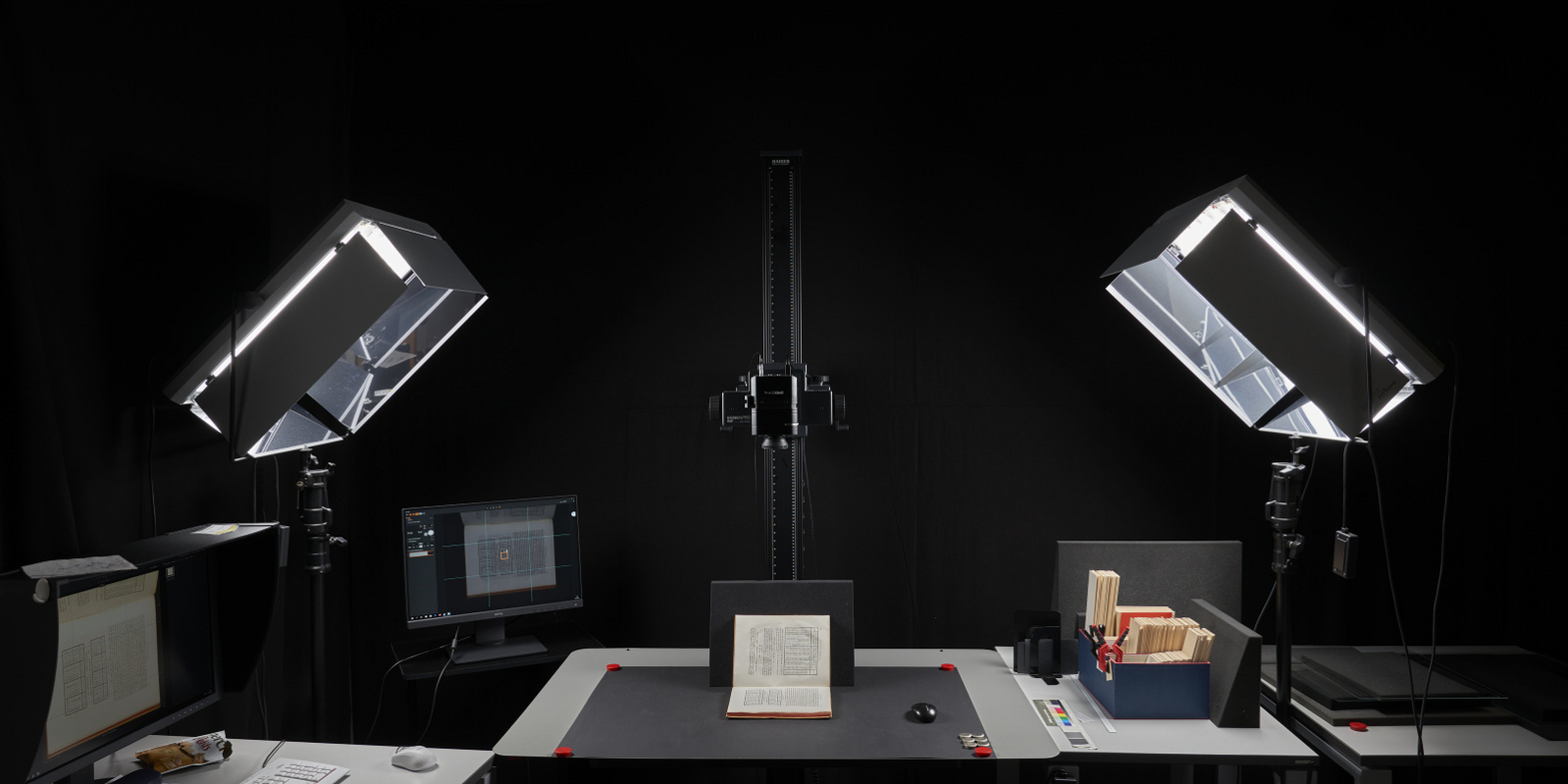Projects of the Klassik Stiftung Weimar are funded by the European Regional Development Fund (ERDF) and the Free State of Thuringia, represented by the State Chancellery of Thuringia, Department of Culture and the Arts.
Cultural asset
digitize

digitize

The collections of the Klassik Stiftung Weimar comprise a unique selection of museum objects, artworks, estates, historic prints, photographs, drawings and graphic works, all of which are an integral part of our national cultural heritage. The historic buildings themselves and Weimar’s gardens and parks are also cultural assets which must be preserved and presented with contemporary methods and cutting-edge technology.
The digitisation of the collections and holdings of the Klassik Stiftung Weimar is carried out for the purpose of cataloguing and studying the objects. However, digitisation also plays an equally important role with regard to education, presentation and accessibility. This not only allows us to present these cultural assets in a modern fashion, for example via websites and apps, but also facilitates access to objects which might otherwise be impossible due to conservation reasons. Consequently, the collections and holdings are being converted into digital form independent from the indispensable efforts to preserve them in their original condition.
In addition to scanning or photographing 2D objects (e.g. object images, archival documents, books) and creating 3D models (e.g. scans and models), the process of digitising cultural assets includes indexing the objects using descriptive data. The aim is to increase the visibility of our cultural heritage online.
Thanks to the expansion of digital cultural content, funded through the ERDF project "Digitisation of collections at the Klassik Stiftung Weimar", we were able to tap the existing potential for the development of innovative information technologies. To carry out the digitisation projects at the Herzogin Anna Amalia Bibliothek, the Goethe- und Schiller-Archiv and our museums, the cutting-edge technology was used while the technical equipment in the area of book and manuscript digitisation was completely modernised. This allowed our research associates to digitise the unique book collections at the Herzogin Anna Amalia Bibliothek as gently as possible. And with the aid of special testing devices, they were able to apply material-scientific analysis methods, thereby enabling them to extensively determine the material composition of selected museum holdings.
As part of our comprehensive digitisation strategy, further holdings of the Foundation are being digitised and made available for research and educational purposes. The Klassik Stiftung Weimar is also actively involved in the consortia of the National Research Data Infrastructure (NFDI) in order to make cultural heritage available to the research community.
The digitisation projects are made possible with funding provided by:
ERDF (2017-2023), New Start Culture (BKM, 2020-2023), Special Funding Programme for Central German Palaces and Cultural Landscape (BKM, 2021-2027) and other project funds.

The museums of the Klassik Stiftung Weimar possess a broad spectrum of extraordinary objects, including Goethe’s private collection, the Bauhaus collection and the Graphic Art Collections. Digitising our holdings and collections facilitates access to the works of art and cultural heritage of the Klassik Stiftung Weimar on a global level. The various digitization processes in the workshops serve to improve access to the collections and object data, as well as enrich the visitor experience.
The digitisation of artworks, artefacts and other exhibits using state-of-the-art technology and modern research methods is crucial for preserving Germany’s cultural heritage. Thanks to a digital inventory system which is part of our in-house museum database, these digitisation processes help the museums manage and document their collections and holdings more efficiently. Online users are now able to search for selected digitised works and objects using our Digital Museum Collections online catalogue. Digitisation also offers new possibilities for interactive exhibitions and virtual tours that enrich the museum experience. Selected online platforms and virtual exhibitions make it possible to explore museum collections and holdings. The digitisation processes are based on newly established standards . They contribute to making the museums of the Klassik Stiftung Weimar fit for the future by preserving the collections, making them accessible and creating new opportunities for education and engagement.
The Herzogin Anna Amalia Bibliothek is an archive and research library with a modern digitisation centre that specialises in high-quality digital scanning of books, manuscripts and large-format maps. Four high-resolution camera systems have now been in use for more than ten years. The aim is to achieve a reproduction that comes as close as possible to the original. Careful handling of the originals is just as important as high detail resolution and colour fidelity during digitisation.
A multispectral camera system for images in the infrared and UV range expands the range of services offered by the digitisation workshop to include high-resolution images for scientific image analysis. More than 30,000 digitised works with 3.7 million individual pages are available in the library's digital collections. The database comprises more than 1.5 TB of data and is growing by around 300,000 images every year.


The Goethe- und Schiller-Archiv is the central literary archive for German-language literature from the 18th to the mid-20th century. One of the archive’s main tasks is to make the manuscripts available to the research community, which is being achieved by digitising the archive holdings and collections in addition to presenting the originals in the reading room. The digitisation work and projects are carried out in the archive’s workshops, set up for this purpose in 2012. Metadata gathered through the process of indexing the holdings in the archive database serves as the basis for user-oriented digitisation efforts. In order to facilitate targeted research and usage, the digital facsimiles are linked to the metadata of the manuscripts. A selection of digital facsimiles can be found in the Digital Archive.